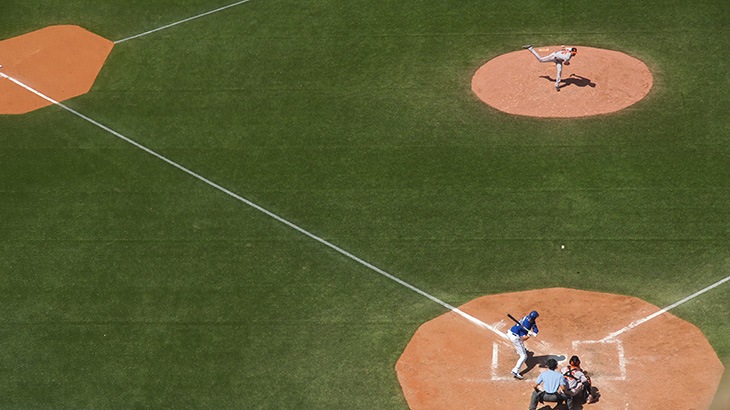Projektledelse
At udvikle, fundraise og lede ’umulige’ eller kantede projekter er blevet lidt af et speciale for mig.
Det er dér, jeg får og skaber energien. Dér hvor det gælder om at bringe alt i spil og balancere lige på kanten– bogstaveligt talt – af bjerget eller bølgen.
Kigge ned i den dybe afgrund og se op mod den øverste top. At gå på en stenet vej eller et bonet gulv er fint. Det er målet og vejen dertil som er mit fokus. Dér, hvor der ikke er én lige vej, er dér, jeg som menneske, som projektleder og projektmager finder frem. Og gør en forskel. Dér, hvor livet viser sig med sine lyse og mørke sider. Søger jeg hen. Hen, hvor et menneskes eller et samfunds potentiale og udvikling er i centrum. Hvor dét at skulle kommunikere, skabe og bruge netværk til at søge og udføre vellykkede projekter, som kræver at mit fulde potentiale fagligt og menneskeligt kommer i spil. Meget gerne og altid sammen og i respekt for andre kompetente personer. Dér, hvor ideer, styrker og faglig mangfoldighed udveksles, er det min erfaring, at der opstår de stærkeste projekter med de bedste resultater.
At møde mennesker fra andre kulturer – og at lede projekter som omfatter sociale og kulturelle forskelle inspirerer mig og tvinger mig til at bringe mange kompetencer i spil på samme tid. At bygge bro over disse forskelle og gøre det hvor der er højt til loftet og vide horisonter, for hvad man kan, må og gør – er der hvor der bliver plads til at skabe og udføre projekter med kant og tyngde/substans. Det er dér, jeg er.
History of Baseball in the United States of America
. . .
In baseball, the pitcher is the player who throws the baseball from the pitcher’s mound toward the catcher to begin each play, with the goal of retiring a batter, who attempts to either make contact with the pitched ball or draw a walk. In the numbering system used to record defensive plays, the pitcher is assigned the number 1. The pitcher is often considered the most important defensive player, and as such is situated at the right end of the defensive spectrum. There are many different types of pitchers, such as the starting pitcher, relief pitcher, middle reliever, lefty specialist, setup man, and closer.
Traditionally, the pitcher also bats. Starting in 1973 with the American League and spreading to further leagues throughout the 1980s and 1990s, the hitting duties of the pitcher have generally been given over to the position of designated hitter, a cause of some controversy. The National League in Major League Baseball and the Japanese Central League are among the remaining leagues that have not adopted the designated hitter position.
1. Overview
In most cases, the objective of the pitcher is to deliver the pitch to the catcher without allowing the batter to hit the ball with the bat. A successful pitch is delivered in such a way that the batter either allows the pitch to pass through the strike zone, swings the bat at the ball and misses it, or hits the ball poorly (resulting in a pop fly or ground out). If the batter elects not to swing at the pitch, it is called a strike if any part of the ball passes through the strike zone and a ball when no part of the ball passes through the strike zone.

Baseball evolved from older bat-and-ball games already being played in England by the mid-18th century.
There are two legal pitching positions, the windup and the set position or stretch. Either position may be used at any time; typically, the windup is used when the bases are empty, while the set position is used when at least one runner is on base.
2. Pitching in a game
A skilled pitcher often throws a variety of different pitches to prevent the batter from hitting the ball well. The most basic pitch is a fastball, where the pitcher throws the ball as hard as he can. Some pitchers are able to throw a fastball at a speed over 100 miles per hour (160 km/h; 150 ft/s), ex., Aroldis Chapman. Other common types of pitches are the curveball, slider, changeup, cutter, sinker, screwball, forkball, split-fingered fastball, slurve, and knuckleball. These generally are intended to have unusual movement or to deceive the batter as to the rotation or velocity of the ball, making it more difficult to hit. Very few pitchers throw all of these pitches, but most use a subset or blend of the basic types. Some pitchers also release pitches from different arm angles, making it harder for the batter to pick up the flight of the ball.

Baseball was brought by immigrants to North America, where the modern version developed.
There are a number of distinct throwing styles used by pitchers. The most common style is a three-quarters delivery in which the pitcher’s arm snaps downward with the release of the ball. Some pitchers use a sidearm delivery in which the arm arcs laterally to the torso. Some pitchers use a submarine style in which the pitcher’s body tilts sharply downward on delivery, creating an exaggerated sidearm motion in which the pitcher’s knuckles come very close to the mound.
. . .

